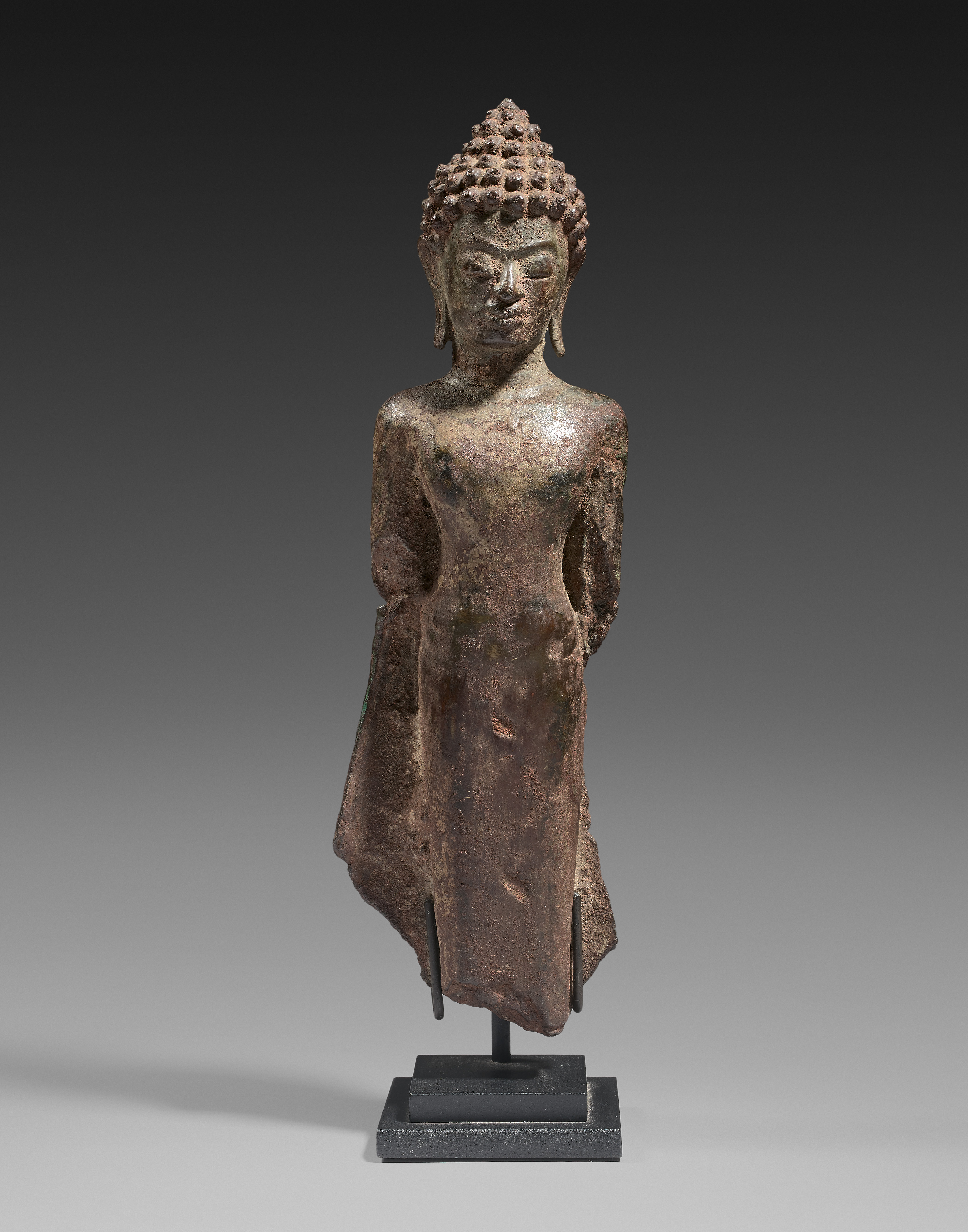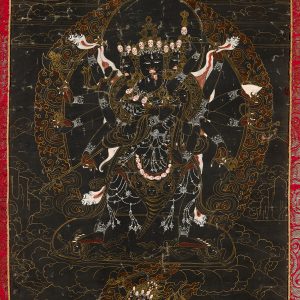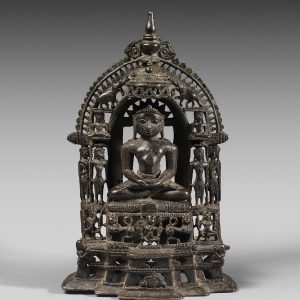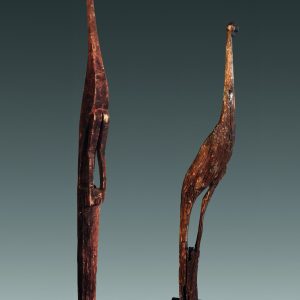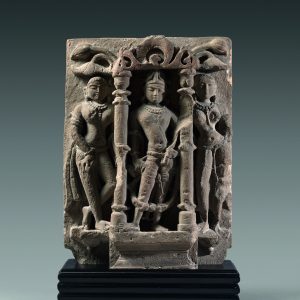Standing Buddha
Bronze
Thailand
Circa 9th century, Môn-Dvâravatî Kingdom
H. 30 cm
Description
Our weekly newsletters continue with . Large in size, i.e. 30 cm in height, this very rare Môn-Dvāravatī standing Buddha in bronze from the 9th century should have been figured in double vitarka mudrā, that is to say symmetrically sketching the gestures of teaching and argumentation.
The iconography originally comes from the Dvāravatī Kingdom, located in the North of the Gulf of Thailand, but the style reflects a fantastic synthesis, mixing the expressivity of the Môn features, the specificity of the Dvāravatī style and the Indian heritage. This is what we appreciate in this work:
The face draws an oval shape and its features are characteristic of the period: high cheekbones, a broad nose and full lips. The half-closed eyelids are underlined by the joined and sinuous eyebrows. The big snail-shell hair loops stand out strongly and contrast with the smooth modelling of the rest of the body.
The missing parts emphasize all the more the frontality of this beautiful object. The hieratic pose amazes by its verticality, and the diaphanous monastic dress accentuates it by underlining the thin bust and the graphic purified lines -rather systematic- of the shoulders, the waist and the legs.
Provenance: Michael Phillips collection, Los Angeles.

